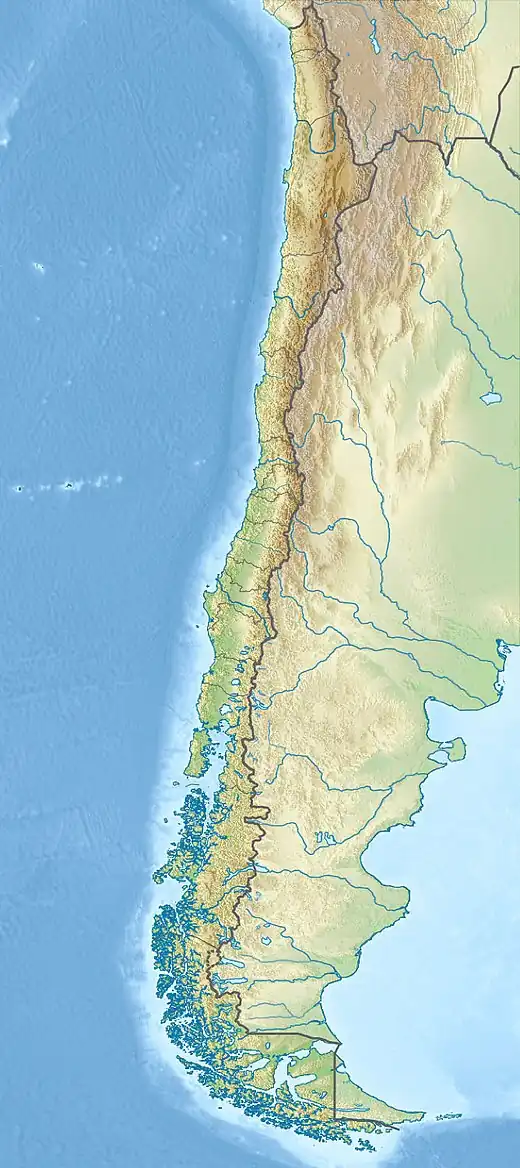Ancud Volcanic Complex
| Ancud Volcanic Complex | |
|---|---|
| Stratigraphic range: Oligocene–Miocene | |
| Type | Geological complex |
| Sub-units | Heuihuen, Teguaco, Cocotue |
| Underlies | Quaternary and Neogene deposits including Lacui Formation |
| Overlies | Caleta Chonos Formation |
| Lithology | |
| Primary | Basaltic andesite |
| Other | Dacite |
| Location | |
| Coordinates | 41°54′S 73°48′W / 41.9°S 73.8°W |
| Region | Los Lagos Region |
| Country | Chile |
| Extent | Chiloé Archipelago |
| Type section | |
| Named for | Ancud |
 Ancud Volcanic Complex (Chile) | |
Ancud Volcanic Complex (Spanish: Complejo Volcánico de Ancud) is a volcanic complex of Oligocene and Miocene age located around Ancud with exposures in Chiloé Island, the Chilean mainland and smaller islets. Three subunits are recognized in the complex: Hueihuen, Teguaco and Cocotue.[1] The complex is part of the mid-Tertiary coastal magmatic belt in south-central Chile.[2]
See also
References
- ^ Valenzuela Ayala, Eduardo (1982). "Estratigrafía de la Boca Occidental del Canal de Chacao, X Región, Chile". Congreso Geológico Chileno (in Spanish). Vol. 3, Actas. pp. A343 – A376.
- ^ Muñoz, Jorge; Troncoso, Rosa; Duhart, Paul; Crignola, Pedro; Lang, Farmer; Stern, Charles R. (2000), "The relation of the mid-Tertiary coastal magmatic belt in south-central Chile to the late Oligocene increase in plate convergence rate", Andean Geology, 27 (2): 341–492